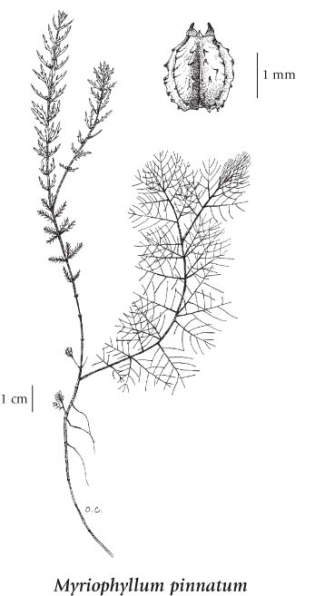Myriophyllum pinnatum (Walter) Britton, Sterns & Poggenb.
green parrot's-feather (cutleaf watermilfoil)
Haloragaceae (Water Milfoil family)
Introduction to Vascular Plants
green parrot's-feather (cutleaf watermilfoil)
Haloragaceae (Water Milfoil family)
Introduction to Vascular Plants

